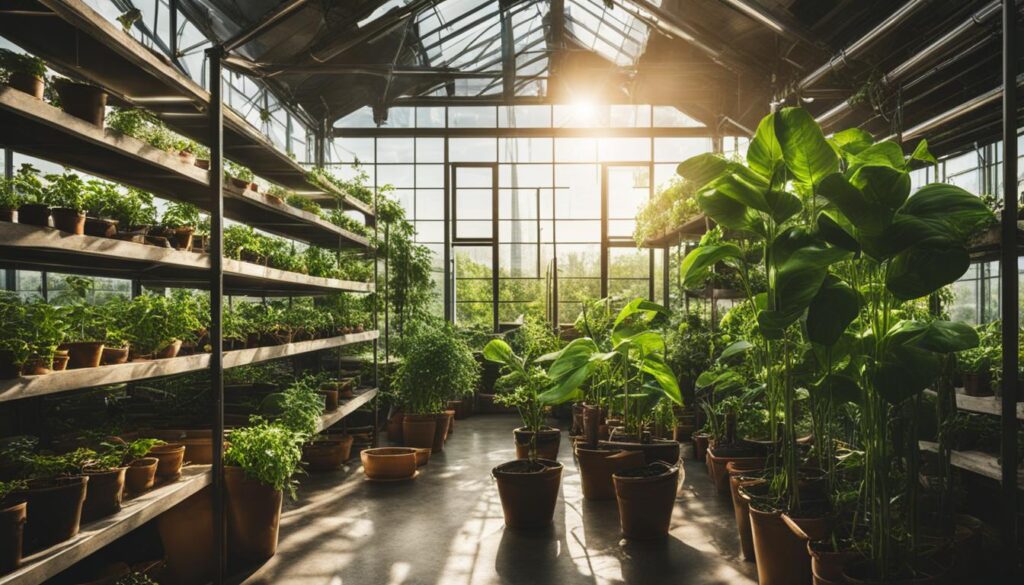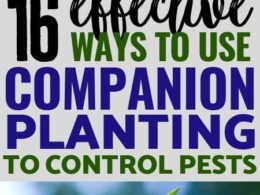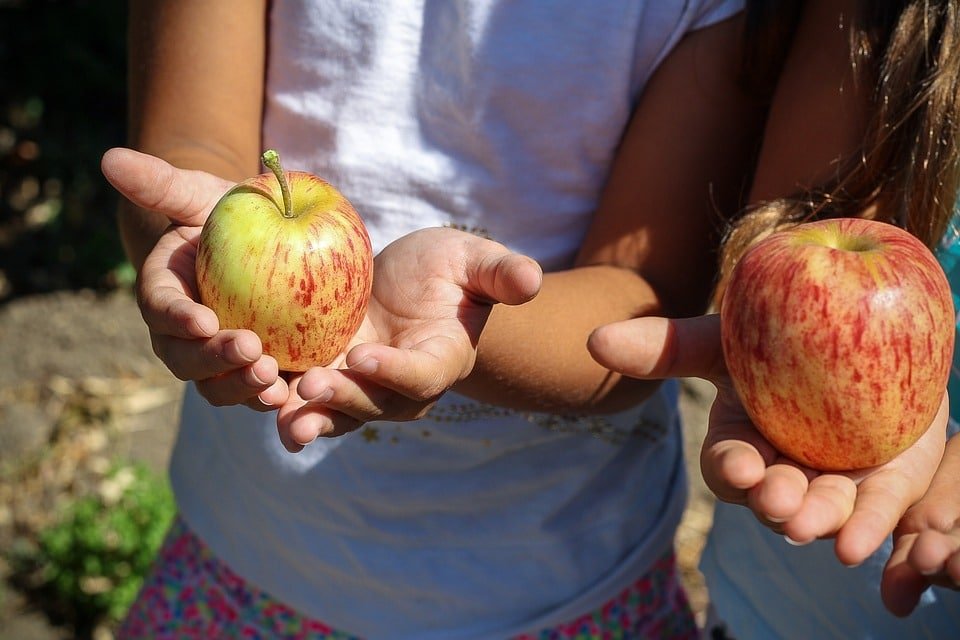Welcome to the world of greenhouse gardening! If you’ve ever dreamed of plucking juicy tomatoes or crisp lettuce straight from your backyard, then this beginner’s guide is the perfect starting point. Whether you’re a seasoned gardener looking to expand your skills or a complete novice eager to embark on your first gardening adventure, this comprehensive guide will equip you with the knowledge and techniques you need to succeed. So, let’s dive in and discover the wonders of greenhouse gardening!
Post Summary
- Greenhouse gardening is a rewarding and enjoyable activity for beginners.
- By learning the basics of greenhouse gardening, you can create a paradise in your garden.
- Greenhouse gardening offers benefits such as homegrown produce, cost-effectiveness, and eco-friendliness.
- Understanding greenhouse design and maintenance is crucial for successful gardening.
- Choosing the right plants and mastering essential techniques are key to thriving in your greenhouse.
Benefits of Greenhouse Gardening
Greenhouse gardening offers numerous benefits for beginners. Not only does it allow you to enjoy the taste and freshness of homegrown produce, but it also provides a cost-effective and eco-friendly gardening solution. By cultivating your own fruits and vegetables in a controlled environment, you can reduce your reliance on store-bought produce and save money on groceries. Plus, growing your own food eliminates the need for long-distance transportation and excessive packaging, making it an environmentally friendly choice.
One of the major advantages of greenhouse gardening is the ability to have complete control over what goes into the soil. By using organic practices and avoiding harmful pesticides, you can grow clean and pesticide-free produce. This promotes a healthier ecosystem and offers significant health benefits for you and your family. Organic produce is rich in nutrients, vitamins, and minerals, providing you with a more nutritious and flavorful eating experience.
Furthermore, greenhouse gardening allows you to extend the growing season and enjoy fresh produce year-round. With the ability to regulate temperature, humidity, and light, you can create an ideal environment for plants to thrive. This means you can continue harvesting homegrown fruits and vegetables even during the colder months, ensuring a steady supply of fresh produce on your table.
Getting Started with Greenhouse Gardening
When it comes to greenhouse gardening, getting started can seem overwhelming, but with a few key considerations, you’ll be well on your way to creating a thriving garden oasis. The first step is to carefully design your greenhouse, ensuring it meets the needs of your plants and fits your available space. A well-designed greenhouse provides optimal growing conditions, giving your plants the best chance for success. Consider factors such as size, shape, and material options when selecting your greenhouse structure.
Ventilation is another crucial aspect of greenhouse gardening. Proper airflow helps regulate temperature, prevents the buildup of humidity, and minimizes the risk of disease. Installing vents and fans in your greenhouse will promote air circulation and provide a healthy environment for your plants to thrive.
Temperature control is essential for greenhouse gardening, as different plants have specific temperature requirements. Installing a thermostat and a heating system can help maintain consistent temperatures throughout the year. Additionally, shading systems or reflective materials can be used to control excessive heat during the summer months.
Insulating your greenhouse is an effective way to conserve energy and protect your plants from extreme temperatures. Adding insulation to the walls, ceiling, and floor helps regulate temperature fluctuations and reduces heating costs. Consider materials such as bubble wrap, double-glazed windows, or insulated panels to create a well-insulated greenhouse environment.
Comparison of Greenhouse Structures
| Greenhouse Structure | Pros | Cons |
|---|---|---|
| Glass | Durable and visually appealing | Expensive and requires regular cleaning |
| Polyethylene Film | Cost-effective and easy to install | Not as durable as glass |
| PVC | Affordable and lightweight | May degrade over time in extreme weather conditions |
| Wood | Natural aesthetic and good insulation | May require more maintenance |
In conclusion, getting started with greenhouse gardening involves careful planning and consideration of factors such as greenhouse design, ventilation, temperature control, and insulation. By creating an optimal growing environment, you can set the stage for a successful and bountiful harvest. Remember to choose a greenhouse structure that suits your needs, install proper ventilation for airflow, utilize temperature control measures, and insulate your greenhouse to regulate temperature fluctuations. With these foundational elements in place, you’ll be well on your way to enjoying the benefits of greenhouse gardening.
Choosing the Right Plants for Your Greenhouse
Choosing the right plants for your greenhouse is crucial to ensure successful gardening. Not all plants thrive in greenhouse conditions, so it’s important to select varieties that can withstand the controlled environment. By choosing the right plants, you can create a thriving greenhouse garden that yields an abundance of vegetables and fruits.
When it comes to vegetables for greenhouse gardening, some popular choices include tomatoes, lettuce, and peppers. These plants thrive in the warm and controlled environment of a greenhouse. Tomatoes, in particular, are known to produce higher yields and better-tasting fruits when grown in a greenhouse. Lettuce and peppers also benefit from the consistent temperature and protection from pests provided by a greenhouse.
Fruits are another great option for greenhouse gardening. Strawberries, for example, can be grown vertically in hanging baskets, making them an excellent choice for maximizing space in a greenhouse. Citrus trees, such as lemons and oranges, can also be grown in a greenhouse, providing you with fresh and juicy fruits year-round.
It’s important to note that not all plants are suitable for greenhouse gardening. Some plants, like root vegetables such as carrots and potatoes, require more space to grow and are better suited for outdoor gardens. It’s always a good idea to research and choose plants that are well-suited for the greenhouse environment to ensure a successful and bountiful harvest.
Suitable Plants for Greenhouse Gardening
| Plant Type | Examples |
|---|---|
| Vegetables | Tomatoes, Lettuce, Peppers |
| Fruits | Strawberries, Citrus Trees |
Essential Techniques for Greenhouse Gardening
When it comes to greenhouse gardening, mastering essential techniques is crucial for beginners. These techniques will help you create an optimal growing environment and maximize your plant’s productivity. Let’s explore some of the essential techniques that every greenhouse gardener should know:
1. Seed Starting
Seed starting is the foundation of successful greenhouse gardening. It involves sowing seeds in trays or containers and then transplanting them into the greenhouse once they have sprouted. This technique gives you control over the plant’s growth from the very beginning and allows you to start your gardening season earlier.
2. Transplanting
Transplanting refers to the process of moving seedlings from their initial containers into their final growing position in the greenhouse. This technique is essential for ensuring proper spacing and providing plants with the necessary nutrients and growing conditions. When transplanting, be gentle with the seedlings to avoid damaging their delicate roots.
3. Pruning
Pruning is a technique that involves removing unwanted or excess plant growth. By selectively pruning your plants, you can control their shape and size, promote better air circulation, and encourage more productive growth. Remember to use sharp, clean tools and prune during the appropriate time of year for each plant species.
4. Maximizing Space
Greenhouses often have limited space, especially for beginners with smaller structures. Maximizing space is crucial for optimizing your plant’s growth potential. Consider using vertical gardening techniques, such as trellising, to train plants to grow upwards instead of outwards. This will save space and allow you to grow more plants in your greenhouse.
5. Trellising
Trellising is a technique used to support vining plants and promote vertical growth. By providing a trellis or stake for your plants, you can prevent them from sprawling on the ground and utilize the vertical space in your greenhouse. This technique is particularly beneficial for plants like tomatoes, cucumbers, and beans.
By mastering these essential techniques, you’ll be well-equipped to embark on your greenhouse gardening journey. Remember to adapt these techniques to the specific needs of your plants and experiment to find what works best for you. Happy gardening!
Conclusion
Greenhouse gardening is the perfect activity for beginners who want to explore the world of gardening and enjoy the many benefits it offers. By harnessing the power of greenhouse gardening, you can transform your garden into a thriving oasis of homegrown produce that will bring freshness and flavor to your table.
The benefits of greenhouse gardening are numerous. Not only does it provide you with cost-effective gardening by reducing your reliance on store-bought produce, but it also promotes eco-friendliness by reducing your carbon footprint. Growing your own organic produce ensures that you have control over what goes into your soil, leading to healthier and pesticide-free fruits and vegetables.
By following the beginner’s guide to greenhouse gardening, you can embark on a journey of discovery and fulfillment. From understanding greenhouse design and ventilation to choosing the right plants and mastering essential techniques, you’ll be equipped with the knowledge and skills to create the ideal growing environment for your plants.
So, why wait? Start your greenhouse gardening adventure today and experience the joy of growing your own delicious and nutritious produce, while contributing to a more sustainable and beautiful world.
FAQ
What is greenhouse gardening?
Greenhouse gardening is the practice of growing plants in a controlled environment inside a structure, typically made of glass or plastic. This allows for optimal plant growth and protection from external weather conditions.
Why should beginners consider greenhouse gardening?
Greenhouse gardening offers several benefits for beginners, including the ability to have fresh, flavorful, and nutritious homegrown produce, saving money on groceries, promoting sustainability, reducing carbon footprint, and having control over soil quality for pesticide-free produce.
What are the basics of getting started with greenhouse gardening?
The basics of getting started with greenhouse gardening include selecting the right greenhouse structure and location, ensuring proper ventilation, controlling temperature, and insulating the greenhouse for energy efficiency.
What plants are suitable for greenhouse gardening?
Vegetables like tomatoes, lettuce, and peppers, as well as fruits like strawberries and citrus trees, are popular choices for greenhouse gardening. It’s important to select plants that thrive in greenhouse conditions and meet their specific requirements.
What are essential techniques for greenhouse gardening?
Essential techniques for greenhouse gardening include seed starting, transplanting, pruning, and maximizing space through trellising. These techniques help manage plant growth and create the ideal growing environment.
Can I Apply Greenhouse Gardening Techniques to my Outdoor Garden for Healthy Plants?
Yes, you can apply greenhouse gardening techniques to your outdoor garden for healthy plants. Some gardening tips for healthy outdoor plants include using mulch to retain moisture in the soil, keeping up with regular watering, and providing adequate sunlight for optimal growth.











